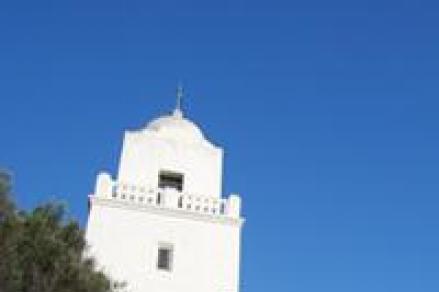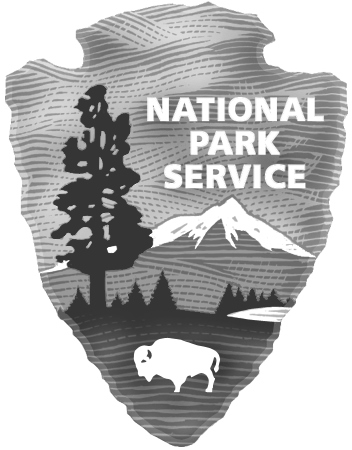The Junípero Serra Museum was inaugurated in San Diego in July of 1929 to honor its Spanish and Christian heritage and to inspire and remind San Diegans to value their own history. The museum was founded by local merchant and preservationist George Marston, and built in the Mission Style on the approximate site of the original San Diego Mission, the first of Alta California’s 21 missions, which was burned by Indians and rebuilt further east of this site. The purpose of this lesson is to consider how history and historical memory interact, the purpose of museums in the preservation and/or creation of history, and how to study history authentically, considering point of view, context, purpose, and who is marginalized in the telling. This lesson is designed for 8th grade, but could easily be applied to high school or beyond. Students will visit the museum and the nearby archaeological site, and study several primary sources from the mission era and the period during which the museum was constructed, in addition to secondary sources.
Junípero Serra Museum, Why is it Here, and What Does it Teach Us?
Junípero Serra Museum, Why is it Here, and What Does it Teach Us?

Location
Type of Landmark
Topics
Learning Objectives
- Students will be able to determine purpose of the museum by reading an overview, visiting the site, reading and hearing about both Father Serra and George Marston from docents, and visiting the associated Presidio archaeological site. Students will compare what they learn and experience with what they already knew about Father Serra (from previous years.)
- Students will compare the primary and secondary sources (artifacts, documents, and docent-provided information) provided to them, and those located at the site.
- Students will consider questions of what is preserved or created for historical memory, by whom, for what purpose and with what result(s), including a discussion of who is left out of the story, and why.
Materials
A) Primary sources
1. Paragraph 3 of Letter from Father Serra (1769) regarding first encounters with Natives of Alta California
2. Quote by Father Francisco Palóu (1775?) regarding “heathens” being taken from Satan
3. Letter from Alta California military leader Fernando de Rivera y Moncada, 1776, regarding instructions for rebuilding Mission San Diego
4. Paragraphs 1, 4, and 22 of “Statement of George W. Marston in 1942” (1942). These paragraphs concern the creation of Presidio Park and Serra Museum.
B) Secondary sources
1. Article on the Serra Museum and historical memory by Gregg Hennessey of the San Diego History Center
2. Brief history of the San Diego Presidio from the NPS website
3. Synthesis of Native-Spanish struggles during mission era, mainly from Native perspective
Suggested Instructional Procedures
This lesson could be part of a unit on the Mission Era or Westward Expansion, or a comparison with English and French colonization on the Eastern seaboard, or a stand-alone lesson on Historical Memory using a local landmark. Here it will be used as a comparison to Plymouth Colony.
- Prior to the trip - Students will brainstorm what they know or think they know about what was happening in San Diego at the time of English colonization in New England. In a larger class discussion, students will review religious conflicts between Protestants and Catholics, and the impact this had on relations with various American Indian peoples. San Diego students should already have basic background on Serra.
- Day before field trip—Students will read primary sources 1-3 for homework, annotating text carefully, and bring with them on trip.
- Visit to Presidio Park—
- Upon arrival, group will gather on grass to west of Serra Museum (or on tile floor of entrance) for a group discussion on the question: What is this place? Many or most students will think it is the Mission. Students will then look at the view of San Diego from the museum site, and consider why this location might have been chosen (strategic: safety, high-up, good view of ocean and valley for possible attacks, breeze).
- Students will learn that the structure is actually a museum, built near the location of the original mission, and just above the San Diego Presidio. Teacher then leads discussion around questions:
- What happened to the original Mission?
- What is a Presidio and why did they need it?
Students will refer back to texts read for homework for a second close read with a partner or team to find that the original mission was destroyed by an Indian attack. They will make connections here with other Indian attacks in New England, and discuss similarities and differences.
- Students will be met by a docent and led through the museum, viewing artifacts and learning about George Marston and his mission of historic preservation.
- Students will tour any visible archaeological dig sites. (Sometimes none are active, so this depends on the timing.)
- Group will reconvene for lunch and discussion around following questions:
- Why did Marston build this museum? (What did he want us to remember?)
- What can we learn from the museum?
- What people are left out or marginalized through the way this museum tells its history? Why?
- Students will read Secondary Sources 2 and then 1 for background on the museum and presidio. Group will consider how these sources add to the discussion of the previous questions, citing from texts to support their points.
- After field trip— Students will read Primary Source 4 and Secondary Source 3 above for homework, and be prepared to discuss differing points of view for following class.
- Next class period— Students will reflect on Serra Museum and Presidio Park and discuss as a class how it does and does not teach us accurately about San Diego’s history, and how it compares to the history of Plymouth Colony and struggles for Independence. This would be a perfect segue to the question: Whose independence is it? with a discussion of the Indian attacks on California missions. Were they violent heathen attacks, or did they want independence from these foreign conquerors? Who was justified in their cause and why? This can be a powerful connection to the discussion of national and personal freedoms, as these attacks were happening in California at the same time the Revolution was fought across the continent.
- **Optional extension: Students most often underestimate the threat or perceived threat of Spain to England and France during the 17th and 18th centuries. This would be a good place to reinforce Spain’s tremendous power in California, the American Southwest, and Latin America.
End of Lesson Assessment
Students will write an essay on one of the two questions below:
Option 1. Is the Serra Museum an effective source of historic preservation and education? Why or Why not? Write a well-organized essay stating your thesis (opinion) and at least three well-developed supporting paragraphs with citations from at least three textual sources.
Option 2. Visit the following websites before answering the question below:
George Marston’s associate John Nolen said Presidio Park would be “the Plymouth Rock of the Pacific”. Do you agree with this statement? Why or why not? Write a well-organized essay stating your thesis (opinion) and at least three well-developed supporting paragraphs with citations from at least three textual sources, to include at least one each from the above sites and the texts assigned for the Serra Museum.
Background Material for Teacher
1. Background. The Junípero Serra Museum was the brainchild of San Diego merchant and preservationist George Marston, as part of his Presidio Park. Marston began this project in 1907 and spent over 20 years and large amounts of his own money making it happen, celebrating its opening in July 1929. Following the stock market crash three months later, the City abandoned the upkeep of the park, and Marston continued to pay for its maintenance until 1937. Currently the museum is operated by the San Diego History Center, the Presidio is a National Historic Landmark, and Presidio Park is owned and operated by the City of San Diego.
Why did Marston want to build this museum and park? It began during a period in which Americans, especially in the West, wanted to document and glamorize their history. San Diegans realized that 1892 would be the 350-year anniversary of Cabrillo’s landing, when San Diego was claimed for Spain, and decided that marking this anniversary would be a way to recognize San Diego’s significance in history. It would celebrate its Spanish (and Christian) heritage, and mark it as both an important historic location and a progressive one in terms of historic preservation. This was followed by the 1915 Panama-California Exposition and creation of San Diego’s famed Balboa Park, the restoration and commercial establishment of Old Town San Diego as a tourist destination, the restoration of the San Diego Mission, and the creation of Marston’s Presidio Park and Serra Museum at the original mission and presidio sites.
2. Founding principles/mission. The Serra Museum houses artifacts from the San Diego History Center’s collection of early Spanish California. Although it displays Kumeyaay artifacts, the focus is mainly on the Spanish, and the original intent was to memorialize Spanish conquest and “civilization” of San Diego, which would later be Mexican San Diego, and finally, Anglo-American San Diego. Marston was of a time and class that saw this as a positive evolution from less to more civilized, and the museum was designed with this in mind.
Thus, the museum and surroundings could be used in a variety of ways for different purposes in the History classroom, but here we will focus on the theme of conquest and settlement in historical memory.
Subject
Grade Level
Standards/Eligible Content
Common Core Standards
Author
Kimberly de Berzunza, Middle School Teacher, California.
Funders/Sponsors
Cultures of Independence has been made possible in part by a major grant from the National Endowment for the Humanities: Celebrating 50 Years of Excellence
Any views, findings, conclusions, or recommendations expressed in this website or during the institutes, do not necessarily represent those of the National Endowment for the Humanities.
Additional funding is being provided by Wells Fargo through HEAD for the Future, its partnership with HSP, and by Independence National Historical Park.


Attention Teachers!
Let us know how you used this plan and be featured on our site! Submit your story here.
